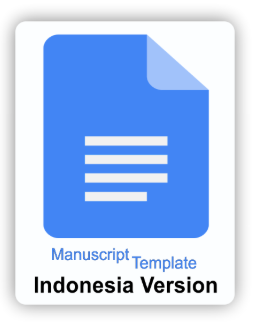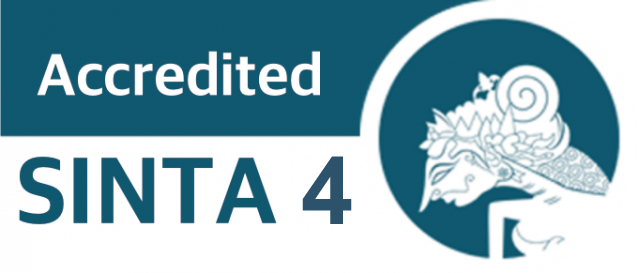Pembelajaran menyenangkan sebagai upaya menanggulangi pandemi Covid-19
DOI:
https://doi.org/10.21831/ep.v2i1.40129Abstract
Artikel ini bertujuan untuk menjelaskan konsep dan prosedur praktis model pembelajaran joyful learning dalam rangka pelatihan guru di Gantiwarno Klaten yang dilakukan oleh Tim PPM dari Departemen Kurikulum dan Teknologi Pendidikan. Pembelajaran yang menyenangkan di dalamnya terdapat hubungan yang kuat antara pendidik dan siswa, tanpa merasa terpaksa atau merasa tertekan. Relasi antara guru dan siswa nampak perlu dirubah dalam posisi egaliter. Perkembangan teknologi informasi memungkinkan siswa mendapatkan informasi lebih cepat dan beragam. Pola pembelajaran daring Joyful learning merupakan suasana belajar-mengajar yang menyenangkan agar siswa memfokuskan perhatiannya penuh pada pembelajaran sehingga waktu untuk memfokuskan perhatiannya tinggi. Waktu yang tinggi untuk memusatkan perhatian terbukti meningkatkan hasil belajar. Keadaan aktif dan menyenangkan tidak cukup jika proses pembelajaran tidak efektif yaitu tidak menghasilkan apa yang harus dikuasai siswa setelah proses pembelajaran berlangsung, karena pembelajaran mempunyai sejumlah tujuan pembelajaran yang harus tercapai. Oleh karena itu, penting bagi para guru untuk memahami pentingnya menerapkan pembelajaran yang menyenangkan dalam proses belajar mengajar sehari-hari dan untuk konteks saat ini lebih penting lagi karena selama pandemi COVID-19 siswa dibombardir dengan tugas yang banyak dan juga materi yang bertubi-tubi selama masa belajar School From Home (SFH). Masa belajar selama pandemi tidak bisa dilihat sebagai pembelajaran yang menyenangkan lagi. Untuk itu, Jurusan Kurikulum dan Teknologi Pendidikan hadir untuk memberikan pemahaman yang menyeluruh tentang pembelajaran yang menyenangkan, bagaimana konsep dikonstruksi dan juga praktik pembelajaran yang menyenangkan mulai dari penyusunan rencana pelajaran (RPP) hingga simulasi model pembelajaran yang menyenangkan dalam bentuk. acara PPM guru di Gantiwarno, Klaten.
Kata kunci: Pembelajaran menyenangkan, guru, RPP
The purpose of this paper is to explain the concept and practical procedures of joyful learning model in the context of teachers' training in Gantiwarno Klaten, done by PPM Team from the Department of Curriculum and Educational Technology. Joyful learning is a learning process in which there is a strong relationship between educators and students, without feeling forced or depressed (not under pressure). The teacher positions himself as a facilitator and student learning partner. This is possible because of the rapid development of information technology that allows students to get information faster from the teacher. Fun learning is a fun teaching-learning atmosphere so that students focus their full attention on learning so that the time to focus their attention is high. The high time to focus attention has been shown to improve learning outcomes. An active and pleasant state is not enough if the learning process is ineffective, that is, it does not produce what students have to master after the learning process takes place, because learning has a number of learning objectives that are achieved. Therefore, it is significant for teachers to understand the important of applying joyfull learning in their daily teaching and learning process more importantly during the pandemic COVID-19 as students are bombarding with a full pack of assignments and also materials that lead to the learning during the pandemic can not be seen as a joyful learning anymore. Thus, the Department of Curriculum and Educational Technology are presence to provide a comprehensive understanding of joyful learning, how the concept is constructed and also the practice of joyful learning starting from the preparation of lesson plans (RPP) to simulating joyful learning models in the form of PPM event for teachers in Gantiwarno, Klaten.
Keywords: Joyful learning, teachers, lesson plans.
References
Academy, T., Academy, R., & Trakt, S. S. (1998). No 主観的å¥åº·æ„Ÿã‚’ä¸å¿ƒã¨ã—ãŸåœ¨å®…高齢者ã«ãŠã‘ã‚‹ å¥åº·é–¢é€£æŒ‡æ¨™ã«é–¢ã™ã‚‹å…±åˆ†æ•£æ§‹é€ 分æžTitle. 19(2), 1–21.
Braunack-Mayer, A., Tooher, R., Collins, J. E., Street, J. M., & Marshall, H. (2013). Understanding the school community's response to school closures during the H1N1 2009 influenza pandemic. BMC Public Health, 13(1). https://doi.org/10.1186/1471-2458-13-344
Dawlatly, Samir. (2010). Recipe for Madness.. The British journal of general practice : the journal of the Royal College of General Practitioners. 60. 547. 10.3399/bjgp10X514990.
Etxebarriet, G. R., ílvarez, M. í. R., Pérez-Izaguirre, E., & Santamaria, M. D. (2020). The role of media in health crisis scenarios. The perception of society on social control and norms during the COVID-19 pandemic. Revista Latina de Comunicacion Social, 2020(78), 437–456. https://doi.org/10.4185/RLCS-2020-1484
Hanvoravongchai, P., Adisasmito, W., Chau, P. N., Conseil, A., De Sa, J., Krumkamp, R., Mounier-Jack, S., Phommasack, B., Putthasri, W., Shih, C. S., Touch, S., & Coker, R. (2010). Pandemic influenza preparedness and health systems challenges in Asia: Results from rapid analyses in 6 Asian countries. BMC Public Health, 10, 1–12. https://doi.org/10.1186/1471-2458-10-322
Maunder, R. G., Leszcz, M., Savage, D., Adam, M. A., Peladeau, N., Romano, D., Rose, M., & Schulman, R. B. (2008). Applying the Lessons of SARS to Pandemic Influenza. Canadian Journal of Public Health, 99(6), 486–488. https://doi.org/10.1007/bf03403782
Tian, F.-J., Yu, C.-W., & Chen, C.-N. (2018). Exploration of Application for E-Books in Elementary School Disaster Prevention Education. International Journal of Organizational Innovation, 10(4), 54–68.
Tyrer, P. (2020). COVID-19 health anxiety. World Psychiatry, 19(3), 307–308. https://doi.org/10.1002/wps.20798
Vaughan, E., & Tinker, T. (2009). Effective health risk communication about pandemic influenza for vulnerable populations. American Journal of Public Health, 99(SUPPL. 2), 324–333. https://doi.org/10.2105/AJPH.2009.162537
https://www.youtube.com/watch?v=NMre6IAAAiU diakses 14 April 2020 pukul 07.08
Lin, Leesa; Jung, Minsoo; McCloud, Rachel F; Viswanath, Kasisomayajula.(2014) Inequalities in a Public Health Emergency: A Case Study of 2009–2010 Pandemic Influenza A Virus Subtype H1N1 Public Health Reports; Cary 129 ( 6), p: 49-60. DOI:10.1177/00333549141296S408
Downloads
Published
How to Cite
Issue
Section
License
Epistema allows readers to read, download, copy, distribute, print, search, or link to its articles' full texts and allows readers to use them for any other lawful purpose. The journal allows the author(s) to hold the copyright without restrictions. Finally, the journal allows the author(s) to retain publishing rights without restrictions
- Authors are allowed to archive their submitted articles in an open access repository
- Authors are allowed to archive the final published article in an open access repository with an acknowledgment of its initial publication in this journal

This work is licensed under a Creative Commons Attribution-ShareAlike 4.0 Generic License.











